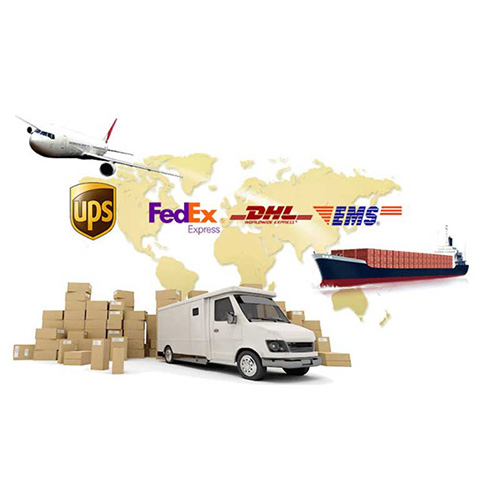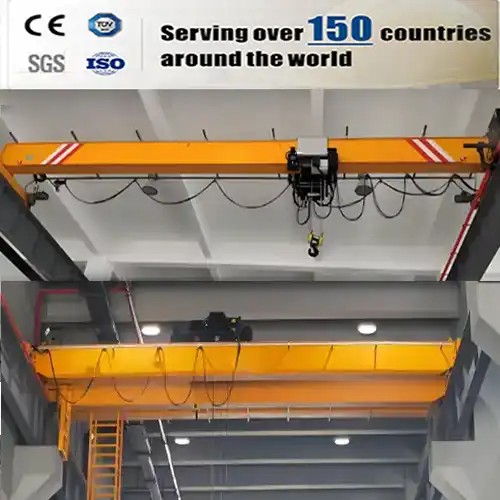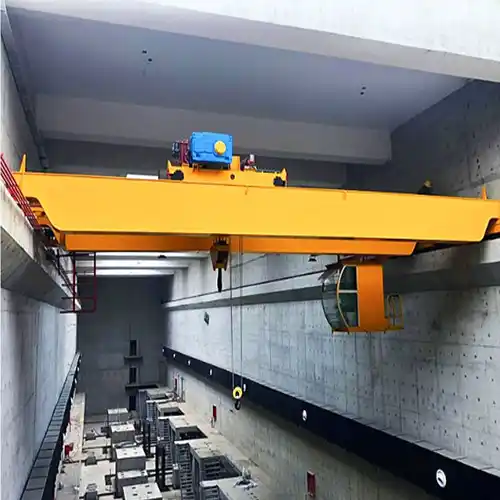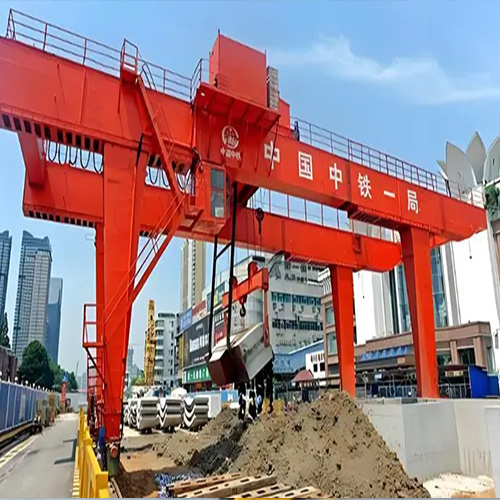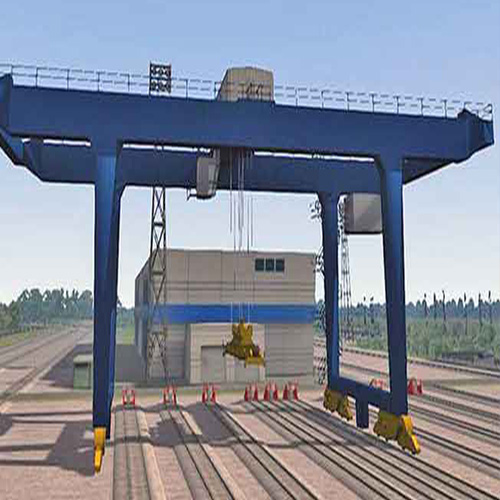Buy Crane from China: Transportation & Logistics for Overhead Cranes
Buy overhead cranes & gantry crane from China. Learn about transportation & logistics considerations for safely moving Chinese overhead cranes to your location.
Category: China
Your Trusted Overhead Travelling Crane Manufacturer & Supplier
Buy Crane from China: Transportation & Logistics for Overhead Cranes
Buy overhead cranes & gantry crane from China. Learn about transportation & logistics considerations for safely moving Chinese overhead cranes to your location.
Significance of Transportation and Logistics
Overhead cranes, the heavy lifting workhorses of industries worldwide, play a pivotal role in the smooth functioning of manufacturing, construction, and logistics sectors. Their ability to handle substantial loads with precision makes them indispensable assets. However, to harness their power, one must first tackle the challenge of physically moving these mammoth machines from their birthplaces to operational sites.
Transportation and logistics are the unsung heroes of the crane acquisition process, ensuring that these mechanical marvels reach their intended destinations intact and ready for action. In this guide, we embark on a journey through the intricate landscape of transporting and logistics for Chinese overhead cranes.
This comprehensive exploration delves into the critical factors that crane buyers from around the world need to consider when procuring cranes from China. Whether you're an industrial powerhouse seeking to bolster your manufacturing capacity or a construction company aiming to enhance your lifting capabilities, the insights within this guide will serve as your compass, guiding you through the complexities of crane logistics.
As we navigate this terrain, we'll uncover the most suitable transportation methods, shipping routes, packaging techniques, and installation procedures. We'll also shed light on the financial aspects, including import duties and taxes, and offer advice on overcoming common hurdles like language barriers and customs procedures.
Choosing the Right Transportation Method
Modes of Transport
Transportation is the linchpin of any successful crane acquisition endeavor. When it comes to moving Chinese overhead cranes to your location, there are several modes of transport to consider, each with its own set of advantages and considerations.
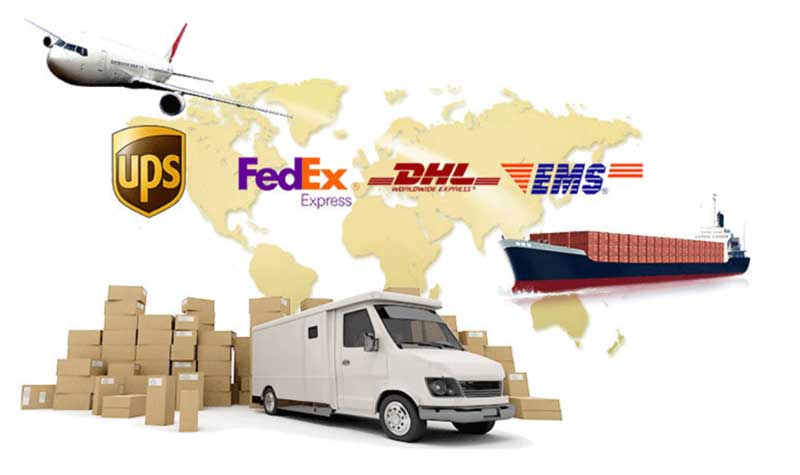
Exploring Various Modes
- Sea Freight: Sea freight is a common choice for shipping heavy machinery like overhead cranes. It's cost-effective for long-distance transport and suitable for cranes of varying sizes. However, it may have longer transit times compared to air freight.
- Air Freight: Air freight is the fastest option, ideal for urgent crane deliveries. However, it tends to be more expensive and is best suited for smaller cranes due to weight and size restrictions.
- Land Transport: For shorter distances or when cranes need to be transported within the same country, land transport via trucks and trailers is a practical choice. It offers flexibility in reaching destinations that may not be accessible by sea or air.
Factors Influencing the Choice
The selection of the most suitable transportation method hinges on several key factors:
- Crane Size and Weight: The dimensions and weight of the crane play a pivotal role in determining the transport mode. Larger and heavier cranes may require sea freight or specialized heavy transport services.
- Delivery Timelines: Consider your project's timeline and urgency. Air freight is the quickest option, while sea freight and land transport may have longer transit times.
- Budget Constraints: Budget considerations can heavily influence your choice. Air freight is generally more expensive than sea freight or land transport.
Selecting Reliable Freight Forwarders
Once you've decided on the transportation method, the next crucial step is selecting a reliable freight forwarder. These logistics experts are instrumental in orchestrating the movement of your crane from the factory to your doorstep.
Providing Guidance on Selection
- Experience with Heavy Machinery: Look for freight forwarders with experience in handling heavy machinery, particularly overhead cranes. Their familiarity with the specific requirements of cranes ensures a smoother process.
- Credentials and Track Records: Verify the credentials and track records of potential freight forwarders. Are they properly licensed and insured? Have they successfully transported cranes before? Request references and reviews from previous clients to assess their reliability.
- Customs Expertise: Freight forwarders well-versed in customs procedures can help navigate the often-complex regulations and paperwork associated with international shipments.
Choosing the right transportation method and collaborating with reputable freight forwarders are pivotal steps in ensuring the safe and efficient movement of your Chinese overhead crane. These decisions will have a profound impact on the success of your crane acquisition project.
Shipping Routes and Options
Exploring Shipping Routes
Navigating the vast seas that separate China from destinations around the world requires a keen understanding of shipping routes. The choice of route can significantly impact the efficiency and cost of transporting your Chinese overhead crane. Let's embark on a journey through these maritime pathways.
Highlighting Common Shipping Routes
- Trans-Pacific Route: This route connects Chinese ports on the Pacific Ocean to destinations in North America, such as the West Coast of the United States and Canada. It's a crucial route for crane shipments to these regions.
- Trans-Atlantic Route: The Trans-Atlantic route links Chinese ports with those in Europe, including major hubs in the United Kingdom, Germany, and the Netherlands. It's essential for crane deliveries to Europe.
- Asia-Africa Route: If your crane is destined for Africa, this route connects Chinese ports to countries along the eastern coast of Africa. Ports in South Africa, Kenya, and Tanzania are commonly used for crane shipments.
- Intra-Asia Route: For cranes moving within Asia, intra-Asia routes facilitate transport to countries like Japan, South Korea, and Southeast Asian nations.
Advantages and Considerations
The choice of shipping route should align with your project's specific needs:
- Cost Efficiency: Some routes may be more cost-effective than others. Consider factors like fuel prices, tolls, and tariffs along the route.
- Transit Time: Transit times can vary significantly depending on the route. Urgent deliveries may require faster routes, like Trans-Pacific air freight.
- Accessibility: Ensure that the chosen route includes ports equipped to handle heavy machinery like overhead cranes.
Containerization and Break Bulk
The difference between containerization and break bulk shipping is pivotal in making informed decisions about how to transport your crane.
Explaining Containerization
Containerization involves placing the crane components and parts inside shipping containers. This method offers advantages such as:
- Protection: Containers shield crane components from weather and environmental factors.
- Efficiency: Containerized shipping is well-organized and facilitates easy loading and unloading.
Unveiling Break Bulk Shipping
Break bulk shipping involves loading crane components individually onto the vessel's deck. This method has its merits as well:
- Versatility: Break bulk allows for the transportation of oversized or irregularly shaped crane parts.
- Flexibility: It's adaptable to handling various cargo sizes, making it suitable for cranes of different dimensions.
The choice between containerization and break bulk depends on the crane's size, weight, and specific requirements. Smaller cranes may fit neatly into containers, while larger, bulkier cranes may require break bulk shipping.
Understanding these shipping routes and methods empowers you to make informed decisions about how to transport your Chinese overhead crane efficiently and cost-effectively. Your choice of route and shipping approach will play a pivotal role in the successful delivery of your crane to its destination.
Packaging and Securing Cranes for Transport
Crane Packaging
The journey of your Chinese overhead crane from the factory to your location is no small feat. To ensure that your crane arrives in pristine condition, proper packaging is paramount.
The Importance of Proper Packaging
- Protection from the Elements: Chinese overhead cranes often travel long distances across varying climates. Proper packaging shields the crane components from moisture, dust, and temperature fluctuations that can lead to corrosion and damage.
- Preventing Transit Damage: Vibrations and shocks during transport can take a toll on delicate crane parts. Adequate packaging cushions and protects the crane against these stresses.
- Compliance with Standards: The international transportation of machinery, including cranes, often requires adherence to packaging standards and regulations. Ensuring compliance is vital to avoiding delays and complications during transit.
Industry-Standard Packaging Practices
Industry standards typically dictate packaging requirements for overhead cranes. These practices may include:
- Use of Protective Materials: Employing materials like anti-corrosion coatings, padding, and moisture-resistant barriers to safeguard crane components.
- Secure Encasement: Placing crane parts within sturdy crates or containers designed to withstand the rigors of transportation.
- Labeling and Documentation: Clearly labeling packages with important information, such as contents, weight, and handling instructions. Providing comprehensive documentation to accompany the shipment.
Securing Cranes for Safe Transport
While packaging protects against external factors, securing the crane within the transportation vessel or vehicle is equally critical to its safety during transit.
How Cranes Are Secured
- Bracing and Blocking: Using braces and blocks to immobilize and support crane components. These are strategically positioned to prevent shifting during transport.
- Lashing and Fastening: Employing lashings, straps, and fasteners to hold crane parts firmly in place. These restraints are crucial in minimizing movement.
The Need for Secure Lashings and Fastenings
Secure lashings and fastenings are non-negotiable when transporting overhead cranes:
- Minimizing Risks: Loose or inadequately secured components pose a risk of shifting, which can result in damage to the crane and compromise safety.
- Ensuring Stability: Proper lashings and fastenings guarantee the crane remains stable and stationary, even during rough sea voyages or overland transport.
- Meeting Safety Standards: Compliance with safety standards and regulations for the transportation of heavy machinery is contingent on secure lashings and fastenings.
The significance of proper packaging and secure fastenings is crucial for the safe and successful transportation of your Chinese overhead crane. These measures not only protect your investment but also ensure that your crane arrives in optimal condition, ready to perform its intended tasks.
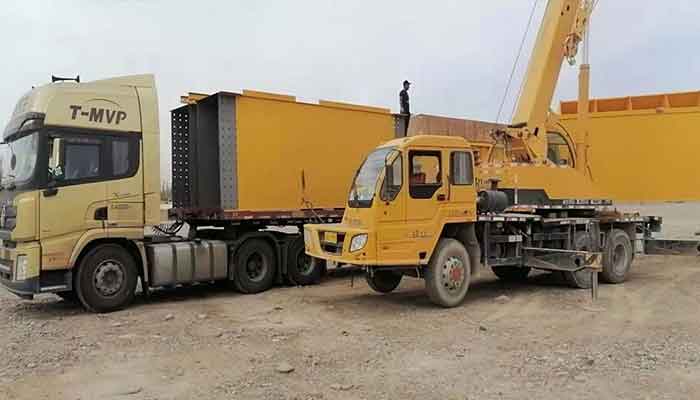
41 Ton Container Gantry Crane Transportation Scheme Analysis
Installation and Commissioning
Preparing for Crane Installation
Before your Chinese overhead crane can perform its duties efficiently and safely, proper installation is crucial. This stage of the process involves several key considerations.
Outlining Pre-Installation Steps
- Site Preparation: Ensure that the installation site is adequately prepared. This includes leveling the ground, providing a stable foundation, and ensuring proper drainage.
- Foundation Requirements: Overhead cranes rely on sturdy foundations to bear the weight and ensure stability. Foundation specifications should adhere to industry standards and the crane manufacturer's recommendations.
- Safety Standards: Strictly adhere to safety standards during the installation process. This includes precautions to protect workers, ensuring the crane's structural integrity, and confirming that electrical and control systems meet safety requirements.
Significance of Adherence to Safety Standards
Ensuring safety is paramount throughout every stage of the installation and operation of overhead cranes. Adhering to established safety standards not only mitigates the risk of accidents, injuries, and damage but also safeguards the reliability and effectiveness of the crane's performance. Here's a deeper look at why adherence to safety standards is of utmost significance:
- Installation Safety: During the installation process, strict adherence to safety protocols is essential to prevent accidents and injuries. Neglecting safety measures, such as inadequate training, improper handling of equipment, or failure to use appropriate safety gear, can have severe consequences. Accidents during installation not only pose risks to workers' safety but can also result in damage to the crane or surrounding infrastructure, leading to costly repairs and project delays.
- Operational Safety: Compliance with safety standards is not merely a legal obligation; it is crucial for ensuring the reliable and safe operation of overhead cranes. Safety standards establish guidelines for crane design, construction, and maintenance, incorporating best practices and industry regulations to minimize risks and enhance operational safety. By adhering to these standards, crane operators can operate equipment with confidence, knowing that it has been designed and maintained to meet stringent safety requirements.
- Legal Obligation: Beyond the ethical imperative of prioritizing safety, compliance with safety standards is also a legal obligation in many jurisdictions. Regulatory authorities enforce safety regulations to protect workers and the public from the hazards associated with crane operation. Failure to comply with safety standards can result in legal repercussions, including fines, penalties, and even criminal liability in cases of negligence or misconduct. Therefore, ensuring compliance with safety standards is not only a matter of responsibility but also a legal requirement that cannot be overlooked.
- Risk Mitigation: Adherence to safety standards serves as a proactive measure to mitigate risks and prevent accidents before they occur. By identifying potential hazards, implementing preventive measures, and establishing safety protocols, companies can minimize the likelihood of workplace accidents and injuries. Investing in safety training, equipment maintenance, and risk assessment procedures helps create a culture of safety within the organization, fostering a workplace environment where employees feel valued, protected, and empowered to prioritize safety in all aspects of their work.
In conclusion, the significance of adherence to safety standards in overhead crane installation and operation cannot be overstated. From ensuring worker safety during installation to guaranteeing the reliable and safe operation of cranes, compliance with safety standards is essential for protecting lives, minimizing risks, and promoting a culture of safety in the workplace. By prioritizing safety at every stage, companies can uphold their legal obligations, safeguard their employees, and enhance the overall efficiency and effectiveness of crane operations.
Professional Installation Services
While some buyers may possess the expertise to install overhead cranes, it's highly recommended to enlist the services of professionals, especially when dealing with complex or heavy cranes.
The Benefits of Professional Installation Services
- Experience: Experienced technicians are well-versed in the intricacies of crane installation. They can handle challenges that may arise during the process.
- Manufacturer's Expertise: Many crane manufacturers offer installation services by their own technical teams. This ensures that the installation aligns perfectly with the crane's specifications and design.
- Safety Assurance: Professionals prioritize safety, adhering to all safety protocols and guidelines during installation.
- Efficiency: Professional installers work efficiently, minimizing downtime and ensuring that your crane is ready for operation as quickly as possible.
- Warranty Compliance: Utilizing professional installation services often ensures that your crane's warranty remains valid.
Enlisting professional installation services provides peace of mind, knowing that your Chinese overhead crane will be set up correctly, in compliance with safety standards, and ready to perform its intended tasks safely and efficiently.
Import Duties and Taxes
Understanding Import Duties and Taxes
When purchasing Chinese overhead cranes for import, it's crucial to comprehend the concept of import duties and taxes and their implications.
Explaining Import Duties and Taxes
- Import Duties: Import duties, also known as customs duties or tariffs, are taxes imposed by governments on imported goods. They are calculated based on the customs value of the imported items.
- Import Taxes: Import taxes encompass various taxes levied on imported goods, such as value-added tax (VAT) or goods and services tax (GST). These taxes are separate from import duties and are often based on a percentage of the customs value.
Impact on Crane Procurement
- Import duties and taxes can significantly impact the overall cost of procuring Chinese overhead cranes.
- Failure to account for these costs in your budget can lead to financial surprises upon importation.
Tax Exemptions and Trade Agreements
While import duties and taxes are common, there are avenues to potentially reduce these additional costs.
Tax Exemptions
Some countries offer tax exemptions or preferential tax rates for specific types of machinery, including overhead cranes. Buyers should investigate whether their country provides such exemptions and the criteria for eligibility.
Trade Agreements
- International trade agreements can have a substantial impact on import duties and taxes. For instance, free trade agreements or bilateral agreements between countries can reduce or eliminate certain duties and taxes for qualified imports.
- Buyers should research and understand the trade agreements that may apply to their crane imports. Leveraging these agreements can lead to cost savings.
It's essential for crane buyers to be aware of import duties and taxes, plan for these additional costs, and explore opportunities for exemptions or reductions through trade agreements. Proper budgeting and due diligence in this regard can lead to more cost-effective crane procurement.
Documentation and Permits
Required Documentation
To facilitate the smooth importation of Chinese overhead cranes, it's imperative to compile and present the necessary documentation. These documents serve as the official record of your crane procurement and importation.
Listing Essential Documentation
- Invoice: A detailed invoice from the crane manufacturer specifying the crane's type, quantity, unit price, total value, and other relevant details.
- Bill of Lading (B/L): This document, issued by the shipping carrier, serves as a receipt of the cargo and provides essential information about the shipment.
- Packing List: A packing list itemizes the contents of each package or container, indicating the crane components and their quantities.
- Certificate of Origin: This certificate confirms the country where the cranes were manufactured. It may be essential for trade agreements or tax purposes.
- Insurance Certificate: Proof of insurance coverage for the shipment, including coverage for any potential damage during transit.
- Customs Declaration: A document that declares the details of the imported goods, including their classification and value.
Ensuring Completeness and Accuracy
Inaccurate or incomplete documentation can lead to delays in customs clearance and additional costs. Buyers should ensure that all documents are accurate and complete to expedite the importation process.
The importation of overhead cranes demands meticulous attention to detail, particularly concerning the accuracy and completeness of documentation. Errors or omissions in paperwork can trigger delays in customs clearance procedures and incur additional costs, underscoring the importance of ensuring that all documentation is thorough and precise. Here's why completeness and accuracy are paramount:
- Customs Clearance Efficiency: Complete and accurate documentation is essential for facilitating smooth customs clearance processes. Customs authorities rely on documentation to verify the nature, value, and origin of imported goods, ensuring compliance with relevant regulations and tariff classifications. Inaccuracies or discrepancies in documentation can trigger customs inspections, causing delays in clearance and disrupting supply chain operations. By providing comprehensive and error-free documentation, buyers can expedite the customs clearance process, minimize delays, and maintain operational efficiency.
- Cost Avoidance: Inaccurate or incomplete documentation can result in financial implications for buyers. Delays in customs clearance may incur demurrage charges for storage or additional fees for expedited processing. Moreover, discrepancies in documentation may lead to customs fines or penalties for non-compliance with import regulations. By ensuring the accuracy and completeness of documentation, buyers can avoid these unnecessary costs and preserve the economic viability of their procurement endeavors.
- Legal Compliance: Compliance with import documentation requirements is not only essential for operational efficiency but also for legal adherence. Regulatory authorities impose strict regulations governing the documentation of imported goods, including invoices, packing lists, certificates of origin, and compliance declarations. Failure to provide accurate and complete documentation may result in non-compliance with import regulations, exposing buyers to legal liabilities and reputational risks. By meticulously preparing and verifying documentation, buyers can demonstrate their commitment to legal compliance and uphold their responsibilities as importers.
- Supplier Accountability: Buyers should also hold suppliers accountable for providing accurate and complete documentation. Suppliers are responsible for preparing export documentation accurately, including commercial invoices, packing lists, and certificates of conformity. Buyers should communicate their documentation requirements clearly to suppliers and verify the accuracy of provided documents before shipment. Establishing robust documentation protocols with suppliers helps prevent errors and discrepancies, fostering transparency and accountability in the importation process.
In conclusion, ensuring completeness and accuracy in documentation is paramount for the efficient importation of overhead cranes. By providing comprehensive and error-free documentation, buyers can expedite customs clearance processes, avoid unnecessary costs, comply with import regulations, and hold suppliers accountable for meeting documentation requirements. Upholding high standards of documentation accuracy and completeness not only enhances operational efficiency but also safeguards against legal risks and promotes trust and reliability in international trade relationships.
Import Permits and Compliance
Depending on your country's regulations, you may need to obtain specific import permits for overhead cranes. Compliance with these regulations is crucial to avoid legal issues and delays.
Necessity of Import Permits
Import permits are often required for goods that have the potential to impact safety, health, or the environment. Overhead cranes, being heavy machinery, may fall under these categories.
Navigating the Permit Application Process
- Research Local Regulations: Research and understand the import regulations and permit requirements specific to your country. Contact relevant government agencies if needed.
- Submit Complete Applications: Ensure that permit applications are complete and accurate. Follow the specified procedures for submission.
- Compliance with Conditions: Comply with any conditions or requirements stipulated in the permits, such as safety standards or environmental regulations.
- Professional Assistance: Consider seeking professional assistance or legal counsel to navigate complex permit processes if necessary.
Adhering to documentation requirements and obtaining the required permits is essential for the legal and hassle-free importation of Chinese overhead cranes. Buyers should familiarize themselves with their country's import regulations and take proactive steps to ensure compliance.
Handling Customs Procedures
Navigating Customs
Navigating customs procedures is a critical step in the importation of Chinese overhead cranes. Proper understanding and preparation can streamline this process and help avoid delays or complications.
Guiding Through Customs Procedures
- Customs Broker or Agent: Consider enlisting the services of a customs broker or agent experienced in handling heavy machinery imports. They can provide expert guidance and ensure compliance with customs regulations.
- Documentation Submission: Submit all required documentation accurately and in a timely manner. Customs authorities typically require invoices, bills of lading, packing lists, permits, and other relevant paperwork.
- Declaration Accuracy: Ensure that the customs declaration accurately reflects the details of the imported cranes, including their type, value, and quantity.
Customs Inspection and Clearance
Understanding the customs inspection process and facilitating smooth clearance is crucial for a hassle-free importation experience.
Explaining the Customs Inspection Process
Customs authorities may conduct inspections to verify the accuracy of declarations and assess the compliance of imported goods with local regulations.
Facilitating Smooth Clearance
- Transparency: Maintain transparency in all dealings with customs authorities. Accurate declarations and open communication can help build trust.
- Accuracy: Ensure that the declared information matches the actual shipment to avoid suspicion or delays.
- Professional Support: Rely on the expertise of customs brokers or agents who can guide you through the inspection and clearance process.
Navigating customs procedures can be complex, but with careful preparation and professional assistance, buyers can ensure a smooth and lawful importation of Chinese overhead cranes.
Effective Communication with Shippers and Authorities
Communicating with Shippers
Maintaining effective communication with shipping companies or freight forwarders is vital for overseeing the transportation and delivery of Chinese overhead cranes.
Tips for Communication
- Regular Updates: Establish a communication schedule with your shipping partners to receive regular updates on the status of your crane shipment.
- Tracking Tools: Utilize tracking tools and systems offered by shipping companies to monitor the real-time location and progress of your cranes.
- Document Exchange: Ensure prompt exchange of necessary documents and information related to the shipment.
Cooperation with Authorities
Cooperating with customs and regulatory authorities is essential for a smooth importation process. Effective communication can help resolve issues or delays that may arise.
Maintaining Open Communication
- Proactive Communication: Initiate communication with relevant authorities as needed. Address any inquiries or requests promptly to prevent unnecessary delays.
- Documentation Assistance: Provide any requested documentation or information to authorities in a timely manner to facilitate their review process.
Resolving Issues Through Communication
In case of any issues, disputes, or concerns with customs or regulatory authorities, maintain a cooperative and solution-oriented approach through effective communication.
Effective communication with shippers and authorities ensures that your Chinese overhead cranes are transported and delivered smoothly, complying with all regulatory requirements and timelines.
Insurance Coverage
Insurance Needs
When importing Chinese overhead cranes, it's essential to consider insurance coverage to protect your investment during transit.
The Necessity of Insurance Coverage
- Risk Assessment: Assess the potential risks your cranes may face during transportation, such as damage, theft, or accidents. Insurance provides financial protection against these risks.
- Peace of Mind: Having insurance coverage offers peace of mind, knowing that any unforeseen events won't result in significant financial losses.
Exploring Insurance Options
- Marine Insurance: This type of insurance is designed for goods in transit and can cover various risks, including damage from handling, natural disasters, and accidents during shipping.
- Cargo Insurance: Cargo insurance specifically focuses on protecting the goods being transported, including overhead cranes. It can be tailored to your specific needs and risks.
Insurance Claims and Documentation
In the unfortunate event of damage or loss during transit, understanding the insurance claims process is crucial.
Steps to Take in Case of Damage or Loss
When faced with damage or loss involving overhead cranes, swift and decisive action is crucial to initiate the insurance claims process effectively. Here are essential steps to take to navigate the situation:
- Immediate Inspection: Upon discovering damage or loss, conduct an immediate inspection of the overhead crane to assess the extent of the damage or loss comprehensively. Document the findings meticulously, including photographs, written descriptions, and any relevant observations regarding the cause or circumstances of the incident. Pay particular attention to identifying any safety hazards or immediate risks associated with the damaged or lost components.
- Notify the Insurer: Promptly notify your insurance provider of the incident, providing them with all necessary documentation and information. Contact your designated insurance representative or claims adjuster to report the damage or loss and initiate the claims process. Be prepared to provide details such as the date, time, and location of the incident, as well as any relevant documentation, such as policy information, incident reports, and supporting evidence gathered during the inspection.
- Cooperate with Insurer's Investigation: Upon receiving notification of the incident, your insurance provider may initiate an investigation to assess the validity and extent of the claim. Cooperate fully with the insurer's investigation process, providing access to relevant documentation, facilitating inspections or assessments as requested, and responding promptly to inquiries or requests for additional information. Transparent communication and collaboration with the insurer can expedite the claims handling process and ensure a favorable resolution.
- Mitigate Further Damage: Take immediate steps to mitigate further damage or loss to the overhead crane and surrounding property. Implement temporary repairs or protective measures as necessary to prevent exacerbation of existing damage or exposure to additional risks. Document any mitigation efforts undertaken, including the rationale behind the actions taken and the associated costs incurred, to support your claim for reimbursement of expenses.
- Follow Up Regularly: Maintain regular communication with your insurance provider throughout the claims process to track the status of your claim, address any concerns or inquiries, and ensure timely resolution. Keep detailed records of all interactions with the insurer, including correspondence, telephone conversations, and meeting notes, to maintain a clear and comprehensive record of the claims handling process.
By following these steps diligently, you can navigate the insurance claims process effectively and maximize your chances of obtaining fair and expedient compensation for damage or loss involving overhead cranes. Prioritizing prompt action, thorough documentation, and proactive cooperation with your insurer can help mitigate the impact of the incident and facilitate a swift and satisfactory resolution.
Importance of Documentation
Effective documentation practices play a pivotal role in the insurance claims process for overhead cranes, offering essential evidence to substantiate claims and facilitate timely resolution. From photographs capturing crane conditions to detailed reports and correspondence with relevant parties, maintaining comprehensive documentation ensures transparency, accuracy, and efficiency in navigating insurance claims. Here's why documentation is indispensable:
- Substantiating Claims: Comprehensive documentation serves as the backbone of insurance claims, providing tangible evidence to support the validity and extent of losses incurred. Photographs documenting the condition of the overhead crane before and after incidents, such as accidents or damage, offer visual evidence of the extent of loss or damage. Detailed reports, including incident descriptions, witness statements, and expert assessments, provide additional context and clarity, helping insurers evaluate claims accurately and expedite claim processing.
- Ensuring Accuracy and Transparency: Documentation fosters transparency and accuracy in the insurance claims process, enabling insurers to assess claims objectively and make informed decisions. By maintaining detailed records of crane specifications, maintenance schedules, and operational histories, buyers can demonstrate compliance with insurance policy requirements and substantiate claims with verifiable data. Transparent communication and collaboration with insurers, including timely submission of documentation and responses to inquiries, enhance trust and efficiency in claims handling, reducing the likelihood of disputes or delays.
- Facilitating Claims Resolution: Well-organized and readily accessible documentation streamlines the claims resolution process, minimizing delays and expediting claim settlements. By keeping all records organized and categorized, buyers can quickly locate and retrieve relevant documentation to support their claims, avoiding unnecessary back-and-forth communication and documentation requests with insurers. Proactive documentation practices, such as maintaining digital backups and cloud storage of records, ensure continuity and accessibility even in unforeseen circumstances, such as natural disasters or system failures.
- Mitigating Risks and Liabilities: Documentation not only facilitates claims processing but also mitigates risks and liabilities associated with overhead crane operations. By documenting adherence to safety protocols, maintenance procedures, and regulatory compliance requirements, buyers demonstrate their commitment to risk management and workplace safety. In the event of accidents or incidents, comprehensive documentation serves as a defense against potential liabilities, helping to mitigate legal risks and protect the financial interests of buyers and insurers alike.
In conclusion, comprehensive documentation is indispensable for navigating insurance claims related to overhead cranes. By capturing detailed records, including photographs, reports, and correspondence, buyers can substantiate claims, ensure accuracy and transparency, facilitate claims resolution, and mitigate risks and liabilities effectively. Prioritizing documentation practices not only enhances the efficiency and effectiveness of the insurance claims process but also safeguards the financial interests and operational continuity of stakeholders involved in overhead crane operations.
Maintenance and Support After Arrival
Post-Arrival Inspection
Upon the arrival of your Chinese overhead cranes, it's crucial to conduct a thorough inspection to ensure they have not sustained any transport-related issues.
Conducting the Inspection
- Visual Examination: Inspect the cranes visually for any visible damages, such as dents, scratches, or loose components.
- Functional Testing: Test the functionality of the crane's various components, including hoists, trolleys, and controls, to ensure they operate as expected.
Addressing Potential Damages
If you identify any transport-related issues:
Document the damages or issues comprehensively.
Contact the manufacturer or supplier immediately to report the problems and seek guidance on the next steps.
Follow the manufacturer's or supplier's instructions for addressing and repairing any damages.
Access to Technical Support
To ensure the long-term performance and safety of your overhead cranes, it's essential to have access to technical support.
How to Access Technical Support
- Manufacturer's Support: Reach out to the manufacturer for technical assistance, maintenance guidelines, and spare parts procurement.
- Authorized Service Providers: If the manufacturer has authorized service providers in your region, consider utilizing their services for maintenance and repairs.
Routine Maintenance and Servicing
Regular maintenance and servicing are crucial for the longevity and safe operation of overhead cranes. Follow the manufacturer's recommended maintenance schedule and guidelines to ensure optimal performance.
By conducting post-arrival inspections and having access to technical support, you can address any issues promptly and ensure that your Chinese overhead cranes continue to operate efficiently and safely.
Conclusion
In conclusion, the acquisition of Chinese overhead cranes involves a multifaceted process, from choosing the right crane type to navigating logistics and customs. By following the guidelines and insights presented in this comprehensive guide, you're equipped with the knowledge and tools necessary for a successful crane procurement journey.
Key Takeaways
- Understanding Your Needs: Start by defining your specific requirements and the type of overhead crane that best suits your industry and application.
- Choosing a Reputable Manufacturer: Research and select a reliable Chinese crane manufacturer with a strong track record, adherence to international standards, and customization capabilities.
- Navigating Transportation and Logistics: Consider transportation methods, routes, packaging, and installation to ensure your cranes reach their destination safely.
- Compliance and Documentation: Familiarize yourself with import duties, taxes, permits, and customs procedures to facilitate a smooth import process.
- Effective Communication: Bridge language and cultural gaps with Chinese manufacturers by exploring various communication channels and employing negotiation strategies.
- Maintenance and Support: Prioritize post-arrival inspections, access to technical support, and routine maintenance for the longevity and safe operation of your cranes.
- Insurance Coverage: Protect your investment by understanding insurance needs and being prepared for the claims process.
By adhering to these guidelines and leveraging the insights gained in this guide, you can embark on your overhead crane procurement journey with confidence. Successful crane acquisition not only enhances your operational efficiency but also contributes to the growth and success of your business.
Main Projects
Related Products

Supplied three grab bucket crane kits to Indonesia, enhancing garbage handling efficiency with high load capacity and reliable performance.
Free consultation to Confirm Parameters & Specifications and Get
Latest Crane Price & Crane Rate.
- Types of overhead cranes : _______?
- Optional: Overhead travelling crane, goliath gantry crane,Slewing jib crane, Single girder or double girder crane,small portable crane or kbk crane, etc.
- Capacity of overhead crane: _______?
- Optional: 0.25ton, 0.5 ton, 1 ton, 2 ton, 3ton, 5 ton, 10 ton,15ton, 20ton, 25 ton, 30ton,35ton, up to 550ton, etc.
- Crane span & lifting height : _______?
- Crane travelling length : _____?
- Control of overhead crane:_______?
- Optional: pendant/ remote/cabin control
- Voltage supply of overhead crane:_____?
- Eg,: 380V50/60HZ,3Phase or others,etc.
- Application/usage of crane:_______?
- Eg,: Steel mill, ,injection mold, cement,stone, concrete,granite, general manufacturing, etc.
Just leave a message via the contact form and our hoist and crane engineer will contact you with in 24working hours.
Get In Touch
